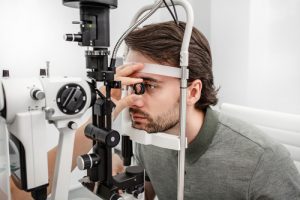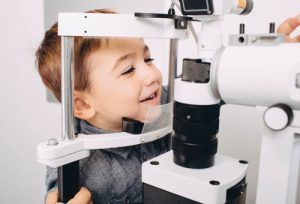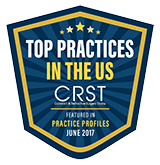You need to have your eyes examined, no matter who you are or your age. Keeping your eyes healthy is essential, and vision-stealing eye conditions are more common than you think. The older you are, the more your risk for these eye conditions increases.
Therefore, you should start seeing your ophthalmologist for eye exams more regularly as you get older. But do you know what the differences are between an optometrist and an ophthalmologist?
Do you know when to see an optometrist and when you need to see an ophthalmologist? Keep reading to learn more about when to see an optometrist rather than an ophthalmologist for eye exams.
When to See an Optometrist

Eye exams are the best measure for ensuring your eyes are healthy. Although one part of any eye exam involves visual acuity, there’s more to it.
Your eye doctor also examines your eyes to look for any signs of damage or disease. Having your eyes dilated is the best way to ensure your optometrist can see all parts of your eyes.
Dilation enlarges your pupil so they can look through it and examine the inside of your eye, especially your retina, which is often most affected by serious eye conditions like glaucoma, age-related macular degeneration (AMD), and diabetic retinopathy.
These serious eye conditions don’t show symptoms in their early stages. The only way to diagnose them early is through an eye exam.
They also cause irreversible damage to your vision. Any vision loss is often irreversible if you wait until you develop visual problems to see an ophthalmologist.
Many eye diseases have no cure, but they are manageable with prompt diagnosis and treatment. Early diagnosis can help slow down vision loss and prevent further impact on your sight.
The best way to keep your vision safe from eye disease is to have regular eye exams.
How often you should see an optometrist for an eye exam depends on your vision, age, and risk for eye disease. At Williamson Eye Center, we recommend patients come in for an eye exam every year to ensure their vision is healthy and they don’t have any vision conditions. Here’s a general breakdown of how often different patients need eye exams:
For Anyone With A Refractive Error

If you’re nearsighted, farsighted, or have astigmatism, you should see your doctor for an eye exam every year. It’s critical to update your prescription because your risk for certain eye conditions is slightly higher if you have a refractive error.
That risk goes up if your refractive error is very high. Age should have nothing to do with scheduling annual eye exams with your ophthalmologist if you have a refractive error and use visual aids to see.
For Children

Children also need eye exams every year. Eye exams are necessary because children are more likely to develop a refractive error while growing.
As they grow, their eyesight is still changing and developing. Many eye conditions, such as color blindness, amblyopia (lazy eye), and ptosis, are also diagnosed in childhood. Talk to your pediatrician to determine when it’s best to start bringing your children in to see an ophthalmologist for eye exams.
For Adults Under 40

Plan to see your eye doctor for an eye exam once a year at Williamson Eye Center. Mention if you’re noticing any issues with your eyes, like chronically dry eyes or dramatic vision changes during your eye exam.
Seeing your eye doctor every year for a baseline eye exam, even if you think you have healthy eyes and don’t use glasses or contact lenses, will allow your eye doctor to ensure your eyes are healthy. If you develop any issues down the line, this baseline will be helpful as it will allow your eye doctor to have something to compare your eyes with in the future.
For Adults 40-64

After you’ve turned 40, it increases your risk of developing age-related eye conditions. Adults over 40 are at a much higher risk of developing cataracts.
You should get an eye exam the year you turn 40 and continue having regular eye exams each year. Your ophthalmologist will come up with the best schedule for eye exams based on your medical history and other factors.
If you have conditions like diabetes, you’ll need more frequent eye exams to watch out for signs of diabetic retinopathy or other diabetic eye diseases. As you get older, you’ll also need more frequent eye exams.
For Adults 65+

Once you turn 65, you’re considered at high risk for most eye conditions, including glaucoma, age-related macular degeneration, and diabetic retinopathy. Because of this, you’ll need comprehensive eye exams every year.
However, you may need eye exams more frequently than once a year, depending on your ophthalmologist’s recommendations. If you exhibit other risk factors, you may need to schedule regular annual eye exams to ensure your eyes stay healthy.
Exceptions Based on Risk
The above recommendations are based on age, but other factors can increase your risk of developing eye conditions. These factors include, but are not limited to:

- Diabetes
- High blood pressure
- Heart disease
- Tobacco use
- Excessive alcohol use
- Damage to the eyes due to UV rays from the sun
- A family history of eye disease
- Ethnicity
Certain ethnicities are at higher risk for certain eye diseases. For example, patients of African and Hispanic descent are at higher risk for glaucoma, but Caucasians are at higher risk for age-related macular degeneration.
If you exhibit other risk factors besides your age, your ophthalmologist may recommend you have more frequent eye exams earlier in life. Just how often you need eye exams will vary based on how high-risk you are, so you must make sure your ophthalmologist is fully informed about your health, medical history, and family medical history.
Your eye doctor can then recommend how often you need eye exams based on your risk.
When to See an Ophthalmologist

In most cases, you can see an optometrist when you need eye exams. But there are situations where you’ll need to see an ophthalmologist instead. These may include:
Cataracts
If you’re diagnosed with cataracts, you’ll want to see an ophthalmologist. They can keep an eye on your cataracts as they develop.
They will also be able to advise you when it’s best to have your cataracts removed by undergoing cataract surgery. An optometrist is not able to perform these procedures.
Eye Trauma
If you suffer any trauma to the eye, see an ophthalmologist. They can diagnose the problem and determine if you need emergency eye care services or any kind of procedure to treat the trauma.
Childhood Eye Conditions
Children may suffer from eye conditions like nearsightedness or farsightedness. But they may also develop things like amblyopia. Childhood eye conditions should be treated by your ophthalmologist.
Glaucoma
Patients with glaucoma need to see an ophthalmologist to come up with a complete treatment plan. Most ophthalmologists begin with eye drops to lower intraocular pressure in patients. If these are not sufficient, glaucoma patients may need other treatments like surgery to treat glaucoma and lower intraocular pressure.
Surgery
Ophthalmologists can perform refractive eye surgeries like LASIK, as well as other procedures like cataract surgery. If you need surgery, your optometrist can refer you to a trusted ophthalmologist for surgical care.
Learn more about the services available at Williamson Eye Center by scheduling an appointment in Baton Rouge, LA, now!



